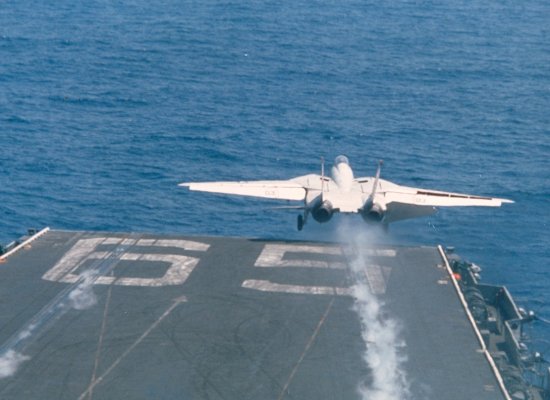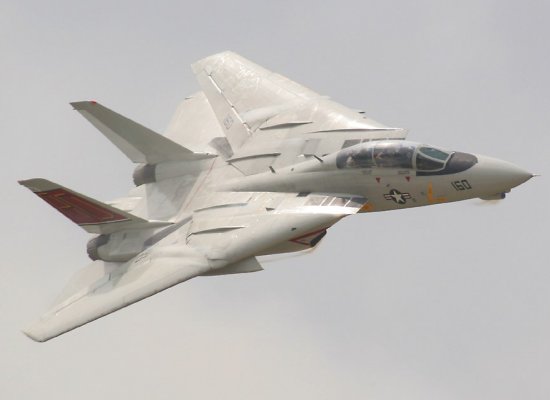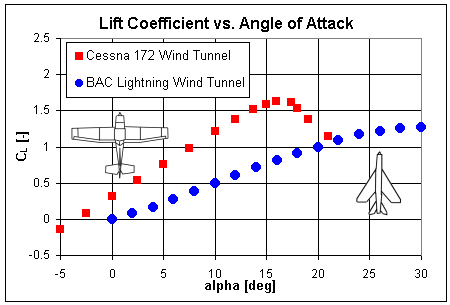|
||||||||||
|
|
||||||||||
|
||||||||||
|
|
||||||||||


An aircraft like the F-14 Tomcat is a special case since it can sweep its wings backward and then forward again to change its wingspan. When swept fully forward, the Tomcat's wingspan is about 64.08 ft (19.54 m) and its wing area is 565 ft² (52.49 m²). The variable-sweep mechanism, however, allows the wings to sweep backward during flight reducing the wingspan to as little as 38.17 ft (11.65 m). There is also some small change is wing area as the wings move but this can be neglected for the sake of our discussion.
During takeoff and landing, the wings of the F-14 are swept fully forward. This position maximizes wingspan for the same wing area and results is an aspect ratio of approximately 6.95. When fully swept back for high speed flight, however, the wingspan is significantly reduced and the aspect ratio is only 2.58. While there is no definitive cutoff point, a wing with an AR less than 4 or 5 is typically considered to be a low aspect ratio surface while one higher is considered a high aspect ratio wing.

Your definitions of wing stall are also reversed. A high aspect ratio wing will generally stall at lower angles of attack than a low aspect ratio wing. These trends become apparent in the following graph that compares the lift of a Cessna 172 with a high aspect ratio wing to a Lightning supersonic fighter with a low aspect ratio wing. The Cessna wing stalls at an angle of attack of about 16° while the Lightning does not stall until 30°.

Although both your definitions of aspect ratio and wing stall are incorrect, the two mistakes cancel each other out leaving the same fundamental question: why does the F-14 fly at high angles of attack at landing when the wing is more likely to stall? As shown in the above graph, a high aspect ratio wing produces much more lift than a low aspect ratio wing. At its stall angle, the Cessna 172 generates a lift coefficient of about 1.7 whereas the Lightning only generates a coefficient of about 1.3 at its stall angle. The lift equation tells us that the higher the lift coefficient is, the slower the plane needs to fly. It is much safer to fly as slow as possible during landing, so a high aspect ratio wing is far more desirable during this stage of flight.
This topic was also explored in greater detail in a previous article about
takeoff and landing flap settings.
- answer by Jeff Scott, 30 July 2006
Related Topics:
Read More Articles:


|
Aircraft | Design | Ask Us | Shop | Search |

|
|
| About Us | Contact Us | Copyright © 1997-2023 | |||
|
|
|||